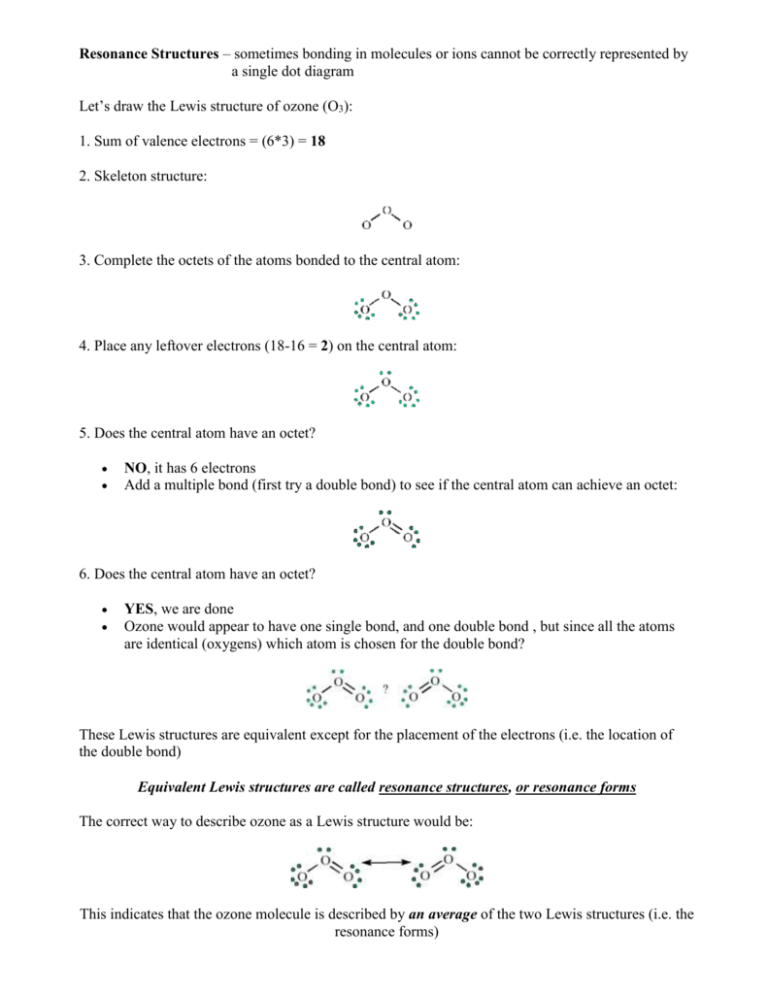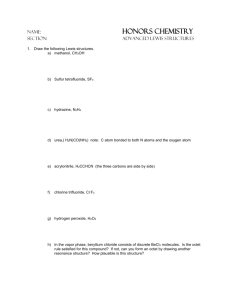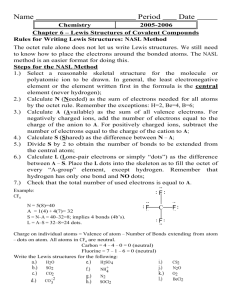Resonance Structures – sometimes bonding in molecules or ions
advertisement

Resonance Structures – sometimes bonding in molecules or ions cannot be correctly represented by a single dot diagram Let’s draw the Lewis structure of ozone (O3): 1. Sum of valence electrons = (6*3) = 18 2. Skeleton structure: 3. Complete the octets of the atoms bonded to the central atom: 4. Place any leftover electrons (18-16 = 2) on the central atom: 5. Does the central atom have an octet? NO, it has 6 electrons Add a multiple bond (first try a double bond) to see if the central atom can achieve an octet: 6. Does the central atom have an octet? YES, we are done Ozone would appear to have one single bond, and one double bond , but since all the atoms are identical (oxygens) which atom is chosen for the double bond? These Lewis structures are equivalent except for the placement of the electrons (i.e. the location of the double bond) Equivalent Lewis structures are called resonance structures, or resonance forms The correct way to describe ozone as a Lewis structure would be: This indicates that the ozone molecule is described by an average of the two Lewis structures (i.e. the resonance forms) The Nitrate (NO3-) ion: 1. Count up the valence electrons: (1*5) + (3*6) + 1(ion) = 24 electrons 2. Skeleton structure: 3. Add octet electrons to the atoms bonded to the center atom: 4. Place any leftover electrons (24-24 = 0) on the center atom: 5. Does the central atom have an octet? NO, it has 6 electrons Add a multiple bond (first try a double bond) to see if the central atom can achieve an octet: 6. Does the central atom have an octet? YES Are there possible resonance structures? YES Other examples: SO2, CO3-2





